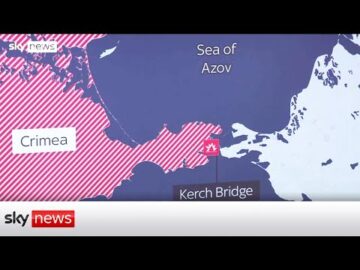A number of concepts exist for exploiting the solar wind as a means of propulsion: the MagSail, the e-sail, and the plasma magnet. All of these concepts work predominately as drag devices and thus are limited to velocities equal to the solar wind (~700 km/s), with only limited ability to generate force transverse to the local direction of the solar wind (i.e., lift). An interesting possibility to be explored is dynamic soaring: Exploiting the difference in wind speed in two different regions of space. Albatrosses and sailplanes are known to use this technique, circling in and out of regions of wind shear. Birch (JBIS, 1989) suggested such a technique could be used via a “MHD Wing” for interstellar travel applications, but did not explore the concept further.
A spacecraft with directional plasma wave antenna that imparts momentum onto the local interplanetary or interstellar medium, generating a force on the antenna (lift). Repeated dynamic soaring maneuvers are made to extract energy and gain multiples of the speed of the solar wind to achieve speeds up to ten times higher than the maximum speed of the solar wind and reach about 2% of the speed of light.
Development of the concept of interacting with the solar wind as a means of propulsion will require experimental validation in stages, the first of which would be demonstration of significant drag against the solar wind using a magnetic structure for propulsion. The plasma magnet appears to be the highest performing in terms of accelerations of the drag concepts reviewed in the Introduction, so a plasma magnet technology demonstration would appear to be the next logical step. A recent study has proposed a small, 16U cubesat demonstrator concept termed Jupiter Observing Velocity Experiment (JOVE) that could transit the orbit of Jupiter just 6 months after launch from Earth. Another application of the wind-riding plasma magnet technology would be a demonstration of rapid access to the solar gravitational lens (SGL) distance (>550AU). The study, called Wind Rider Pathfinder Mission, has shown the SGL region could be accessed in less than 7 years from launch using this technology. These groundbreaking missions would provide validation that meaningful propulsive power could be extracted from the solar wind, providing a foundation for the more advanced concept of extracting electrical power from the wind for lift-generation.
Sending telescopes to the solar gravitational lens would boost the visualization capabilities of a telescope billions of times because it would be looking at light focused by the nearly million mile wide sun. a solar gravitational lens telescope. At optical or near-optical wavelengths, the amplification of light is on the order of 200 billion times and with equally impressive angular resolution. If we can reach this region beginning at 550 AU from the Sun, we can perform direct imaging of exoplanets. An imaging mission is challenging but feasible, using technologies that are either already available or in active development. Under realistic conditions, megapixel imaging of Earth-like exoplanets in our galactic neighborhood requires only weeks or months of integration time, not years as previously thought.
The team has been investigating sending one meter telescopes out about twenty times further than Pluto to use the gravity of the sun bending light. The sun is 865000 miles across which is 109 times wider than the earth. The gravity lets you leverage the sun as a giant light collector. We can go 3 light days away from the Earth and image planets in other solar systems. It would be like we sent a probe into the other solar system.
If this method works we could be exploring other solar systems in the 2030s.











This approach builds upon the concept of a propulsive drive that is powered by external dynamic pressure [the so-called q-drive (Greason, 2019)], however, in the present concept, no onboard reaction mass is used. By using the external power generation to accelerate matter available in the solar wind perpendicular to the flow over the vehicle, lift is generated that is greater in magnitude than the drag generated by the power-extraction process. The result is a type of lift-generating wing, but without a physical structure. In Section 2, the operating principles of this lift-generating mechanism are developed in detail. In Section 3, potential mission concepts are developed utilizing regions of high wind shear available in the Solar System, namely, the interface between the fast (polar) and slow (equatorial) solar wind and the termination shock where the solar wind reverts from supersonic to subsonic flow, to reach velocities of ≈2% of c.
Several structures in the Solar System offer wind gradients large enough for dynamic soaring maneuvers to extract energy. Such structures include but are not limited to: the termination shock, the heliopause, the slow and fast solar wind and the boundary of the planetary magnetosphere. While the density of these structures varies, analysis of drag devices such as the plasma magnet have shown that the extent of the artificially generated magnetosphere around the vehicle naturally expands as the surrounding density decreases. Specifically, the magnetic structure around the spacecraft will expand until the magnetic pressure matches the dynamic pressure of the solar wind. This effect makes devices such as the plasma magnet nearly constant drag as they move outward from the Sun. For the purposes of the analysis in this paper, we have adopted constant values of drag and, since the lift power generated derives from the motion of the drag device through the plasma, constant values of lift as well.
















A vehicle (or bird) executes an elastic collision when entering the moving stream of air via a low-drag banking maneuver. As the vehicle re-enters the quiescent air, it has gained twice the velocity of the wind stream. By then banking in the quiescent air, the vehicle can re-enter the wind stream and increase its velocity again, repeating the maneuver over and over until drag losses counteract the velocity gains and a maximum velocity is achieved. Recently, remote control glider enthusiasts have achieved remarkable velocities exceeding 850 km/hr—approximately 10 times the speed of the wind—by invoking this technique with gliders that have no onboard propulsion



A spacecraft can interact with flows of ionized gas in space (the solar wind or interstellar medium) in order to be accelerated to velocities greater than the flow velocity. Inspired by the dynamic soaring maneuvers performed by sea birds and gliders in which differences in wind speed are exploited to gain velocity, in the proposed technique a lift-generating spacecraft circles between regions of the heliosphere that have different wind speeds, gaining energy in the process without the use of propellant and only modest onboard power requirements.
In the simplest analysis, the spacecraft motion can be modeled as a series of elastic collisions between regions of the medium moving at different speeds. More detailed models of the spacecraft trajectory are developed to predict the potential velocity gains and the maximum velocity that may be achieved in terms of the lift-to-drag ratio of the vehicle. A lift-generating mechanism is proposed in which power is extracted from the flow over the vehicle in the flight direction and then used to accelerate the surrounding medium in the transverse direction, generating lift (i.e., a force perpendicular to the flow). Large values of lift-to-drag ratio are shown to be possible in the case where a small transverse velocity is imparted over a large area of interaction. The requirement for a large interaction area in the extremely low density of the heliosphere precludes the use of a physical wing, but the use of plasma waves generated by a compact, directional antenna to impart momentum on the surrounding medium is feasible, with the excitation of R-waves, X-waves, Alfven waves, and magnetosonic waves appearing as promising candidates. A conceptual mission is defined in which dynamic soaring is performed on the termination shock of the heliosphere, enabling a spacecraft to reach speeds approaching 2% of c within two and a half years of launch without the expenditure of propellant. The technique may comprise the first stage for a multistage mission to achieve true interstellar flight to other solar systems.
Solar sails are the first example of a propulsion technology that utilizes the freely available photons emanating from the Sun, but even the most extreme solar sailing—launched from near the Sun using the highest temperature materials with the lowest areal density (e.g., aerographite)—would only be capable of achieving 2% of c (Heller et al., 2020); more conventional solar sails are limited to less than 0.5% of c (Davoyan et al., 2021). Recently, Lingam and Loeb (Lingam and Loeb, 2020) have examined astrophysical objects (e.g., massive stars, supernovae, etc.) that would permit a radiation-pushed light sail to achieve velocities of 10% of c or greater, but this still leaves the problem of how human technology originating from the Solar System can achieve interstellar flight.
Brian Wang is a Futurist Thought Leader and a popular Science blogger with 1 million readers per month. His blog Nextbigfuture.com is ranked #1 Science News Blog. It covers many disruptive technology and trends including Space, Robotics, Artificial Intelligence, Medicine, Anti-aging Biotechnology, and Nanotechnology.
Known for identifying cutting edge technologies, he is currently a Co-Founder of a startup and fundraiser for high potential early-stage companies. He is the Head of Research for Allocations for deep technology investments and an Angel Investor at Space Angels.
A frequent speaker at corporations, he has been a TEDx speaker, a Singularity University speaker and guest at numerous interviews for radio and podcasts. He is open to public speaking and advising engagements.








